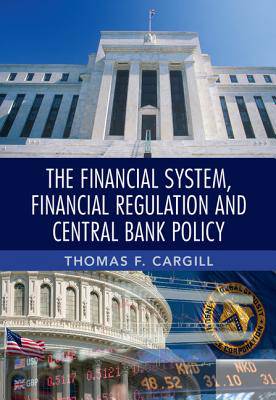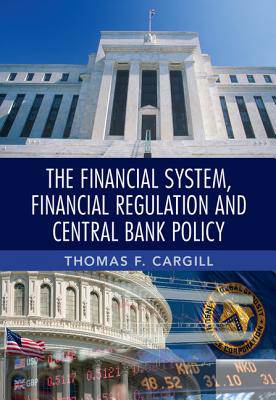
Door een staking bij bpost kan je online bestelling op dit moment iets langer onderweg zijn dan voorzien. Dringend iets nodig? Onze winkels ontvangen jou met open armen!
- Afhalen na 1 uur in een winkel met voorraad
- Gratis thuislevering in België vanaf € 30
- Ruim aanbod met 7 miljoen producten
Door een staking bij bpost kan je online bestelling op dit moment iets langer onderweg zijn dan voorzien. Dringend iets nodig? Onze winkels ontvangen jou met open armen!
- Afhalen na 1 uur in een winkel met voorraad
- Gratis thuislevering in België vanaf € 30
- Ruim aanbod met 7 miljoen producten
Zoeken
The Financial System, Financial Regulation and Central Bank Policy
Thomas F Cargill
Hardcover | Engels
€ 200,45
+ 400 punten
Uitvoering
Omschrijving
Traditional money and banking textbooks are long, expensive, and full of so much institutional and technical modeling detail that students cannot understand the big picture. Thomas F. Cargill presents a new alternative: a short, inexpensive book without the 'bells and whistles' that teaches students the fundamentals in a clear, narrative form. In an engaging writing style, Cargill explains the three core components of money and banking, and their interactions: 1) the financial system, 2) government regulation and supervision, and 3) central bank policy. Cargill focuses on the interaction between government financial policy and central bank policy and offers a critique of the central bank's role in the economy, the tools it uses, how these tools affect the economy, and how effective these policies have been, providing a more balanced perspective of government policy failure versus market failure than traditional textbooks.
Specificaties
Betrokkenen
- Auteur(s):
- Uitgeverij:
Inhoud
- Aantal bladzijden:
- 422
- Taal:
- Engels
Eigenschappen
- Productcode (EAN):
- 9781107035676
- Verschijningsdatum:
- 6/10/2017
- Uitvoering:
- Hardcover
- Formaat:
- Genaaid
- Afmetingen:
- 190 mm x 267 mm
- Gewicht:
- 1047 g

Alleen bij Standaard Boekhandel
+ 400 punten op je klantenkaart van Standaard Boekhandel
Beoordelingen
We publiceren alleen reviews die voldoen aan de voorwaarden voor reviews. Bekijk onze voorwaarden voor reviews.











